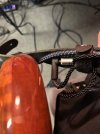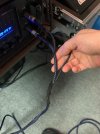Snouttrout
Inspired
I recently watched a Marco Fanton tutorial on YouTube about using FRFRs, as I’ve recently begun to go direct to FOH with my AxeFx.
I have been doing a low cut at 120 Hz and a high cut at 6500 Hz on the signal being sent to FOH. I’ve also been using a real cabinet on stage (but I’m considering an FRFR monitor on stage now.)
Do you just let the sound engineer perform the high and low cuts, or do you do it yourself? Marco was suggesting that we shouldn’t cut highs, but he did cut the lows.
What approach do you take?
I have been doing a low cut at 120 Hz and a high cut at 6500 Hz on the signal being sent to FOH. I’ve also been using a real cabinet on stage (but I’m considering an FRFR monitor on stage now.)
Do you just let the sound engineer perform the high and low cuts, or do you do it yourself? Marco was suggesting that we shouldn’t cut highs, but he did cut the lows.
What approach do you take?


